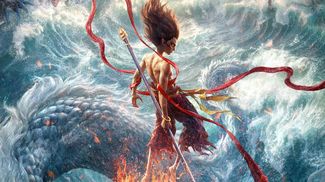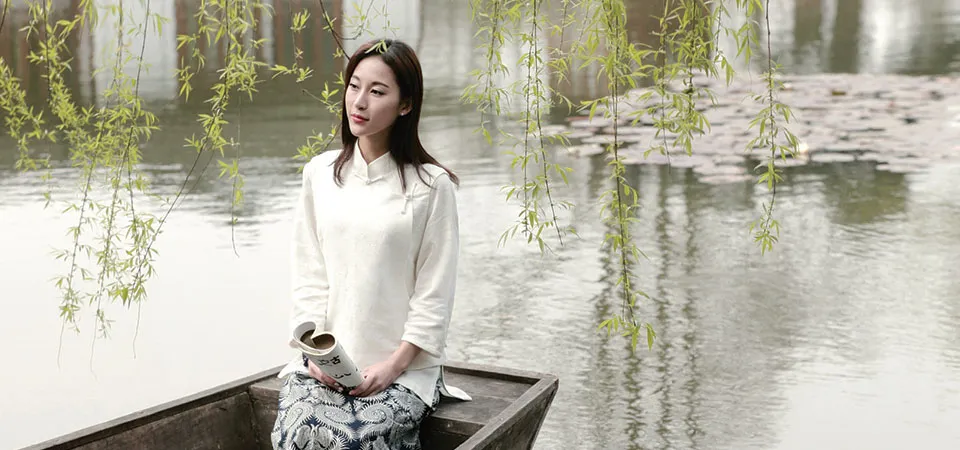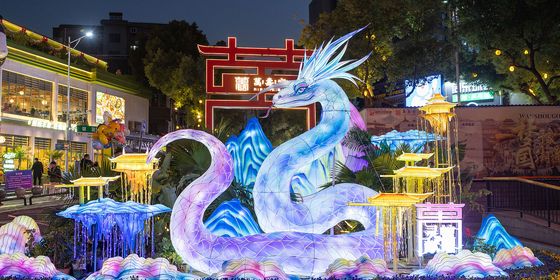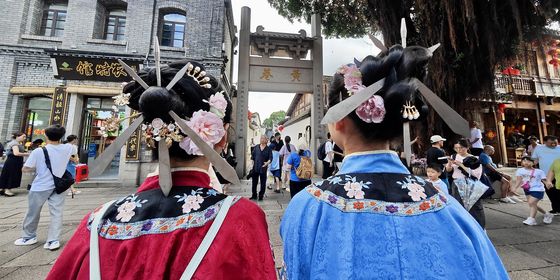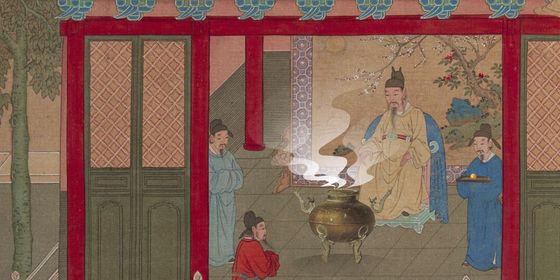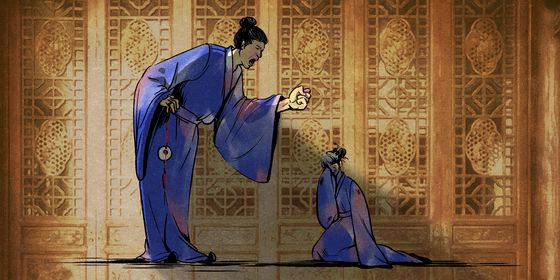Paving a path for traditional clothing in modern-day China
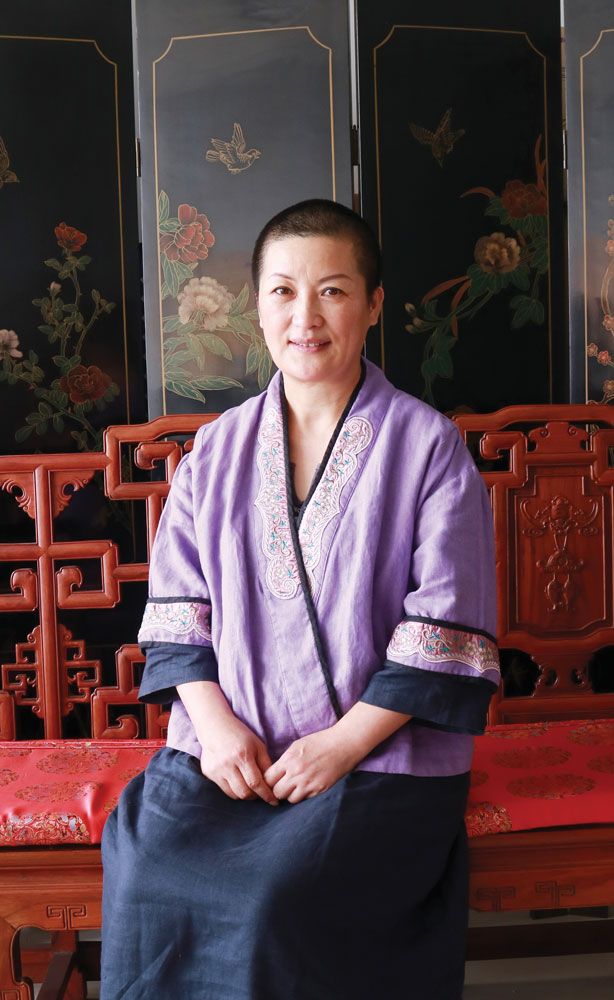
Chen Chaohong, better known by her Dharma name Shanzhi, is the founder of the Shanzhi Garment Company (善智服饰) and a devoted Buddhist. She is focused on the concept of traditional Chinese clothing and fashion, having provided unique designs for many of the world’s movers and shakers, including Jack Ma, founder of the e-commerce giant Alibaba Group, and United Nations Secretary-General Ban Ki-moon. She defines herself as an inheritor of traditional culture and has devoted herself to promoting traditional Chinese fashion.
HOW DID YOU BECOME INTERESTED IN FASHION?
I was influenced by my grandmother, who was a famous tailor in Taizhou, Zhejiang Province. Even now I can still remember her embroidering beautiful patterns, stitch by stitch. She was so beautiful, and so were the clothes she was making. But when I was in university, I didn’t study fashion. I majored in finance and economics. Before I graduated, my two brothers came to Hangzhou and started their clothing business. Because of my interest in fashion, I joined them after I graduated. That was around 1990. We didn’t do the design, just purchased clothes from Hong Kong and then sold them at Hangzhou Tower. That was the start of my career.
WHY DID YOU DECIDE TO FOCUS ON TRADITIONAL CHINESE CLOTHING?
I didn’t actually turn to traditional fashion until 2012. Before that our business focused on contemporary clothes. In 2006, after my second child was born, I decided to stop working and went to study Buddhism. At that time, I thought I would never go back to fashion. But while I was studying Buddhism, I made some new friends, including entrepreneurs and teachers from art colleges who were very interested in traditional Chinese clothing. When they learned that I was in the clothing business, they asked me to make some monastic gowns for them. I agreed. They liked my clothes and I felt that my zeal for clothing was reignited. So I opened a small workshop near the Lingyin Temple where I could make clothes and drink tea with my friends. During that time, I also met many monks and nuns, whose monastic robes in the traditional style grew on me more and more.
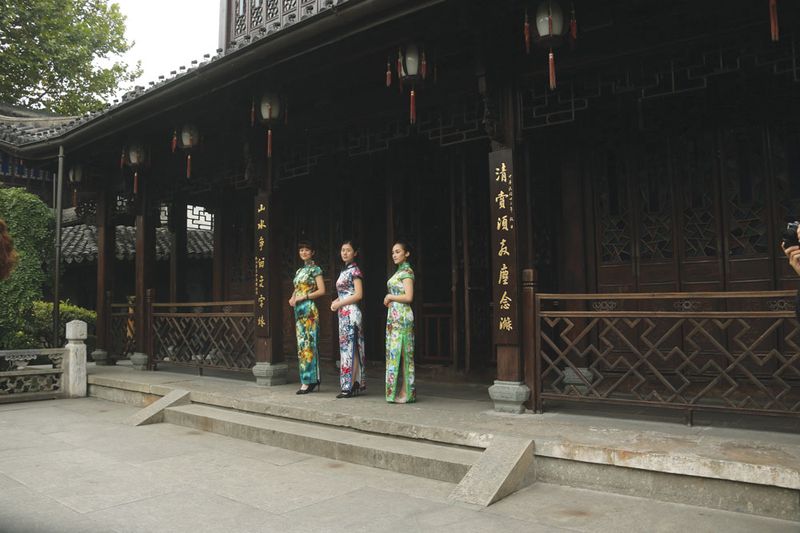
Three models wearing cheongsam by Shanzhi
HOW DID YOUR WORKSHOP DEVELOP INTO SUCH A BIG BUSINESS?
At first, it was just for fun. I didn’t treat it as a business. Then one day a friend came to me and invited me to an expo in Xiamen, which was about Buddhism. Our booth was very large, so I needed to prepare a lot of pieces in a short amount of time. With the help of an experienced pattern designer, I finished 60 garments in time and took them to the expo. To my surprise, my clothes attracted a lot of attention in that exhibition. We received many orders, [totaling] over 200,000 RMB, a great success. We took all those orders, and our business was started.
IS THERE ANY DIFFERENCE BETWEEN THE TRADITIONAL CLOTHING WE KNOW TODAY AND WHAT PEOPLE ACTUALLY WORE?
First of all, there are various kinds of traditional clothing, or, as we say, hanfu. In ancient times, people wore different clothes for different occasions. For example, for a sacrificial rite, clothes would be very solemn, formal, and ceremonial; for daily life, they wore simpler clothes. Garments also varied over time. Today, there are of course new changes and innovations. Based on certain basic principles, we make adaptations to our clothes. It may be merely a new collar design or just to replace traditional fastenings with modern buttons, but the basic framework and the essence are maintained.
YOUR BRAND CREATED A TREND OF “NEW CHINESE STYLE” IN HANGZHOU. HOW WOULD YOU DEFINE “NEW CHINESE STYLE”? WHAT’S NEW?
I think “new Chinese style” means recreating and developing traditional culture. In short, what’s new is the fusion of traditional style and modern material. Today, the traditional lifestyle is coming back. People are beginning to pursue a more comfortable and peaceful life. Tea culture, guqin, flower arranging, and incense appreciation are all becoming more and more popular, and so is traditional clothing. But this is not a return of the ancient times; we also need to follow the developments of time, to create a good combination of tradition and modern styles so that people can wear our clothes in their daily life without being considered weird.
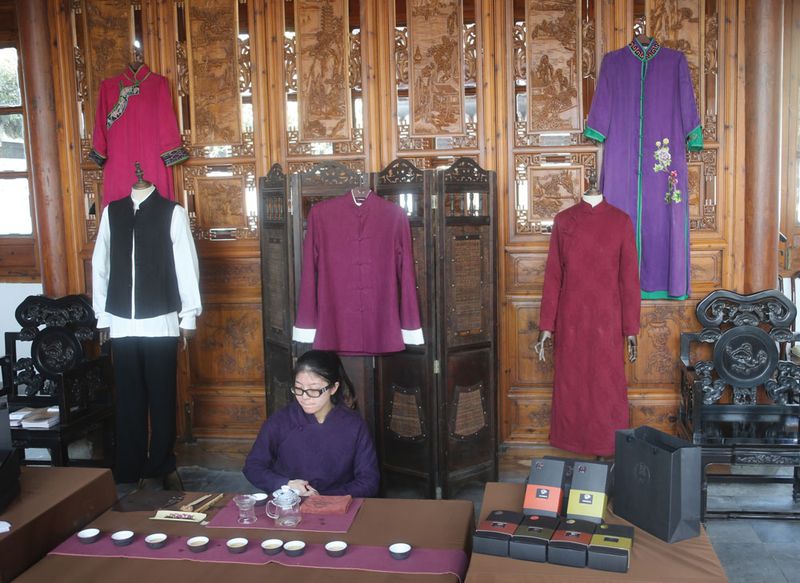
A Shanzhi Garment Company promotional event in Hangzhou
SOME SAY THAT TRADITIONAL COSTUMES ARE NO LONGER MAINSTREAM IN MODERN CHINA, THAT IT’S CULTURALLY VALUABLE BUT IMPRACTICAL. WHAT DO YOU HAVE TO SAY TO THIS?
Actually, traditional clothing is very practical. Its materials are comfortable and the design is simple and convenient. More importantly, these clothes are suitable for Chinese people. In modern China, we wear Western suits far more than our own traditional clothes, but you can tell that when Chinese people put on our own garments, we look different.
“Wearing History” is a story from our newest issue, “Climate Change”, coming soon. To read the whole piece, become a subscriber and receive the full magazine. Alternatively, you can purchase the digital version from the iTunes Store


